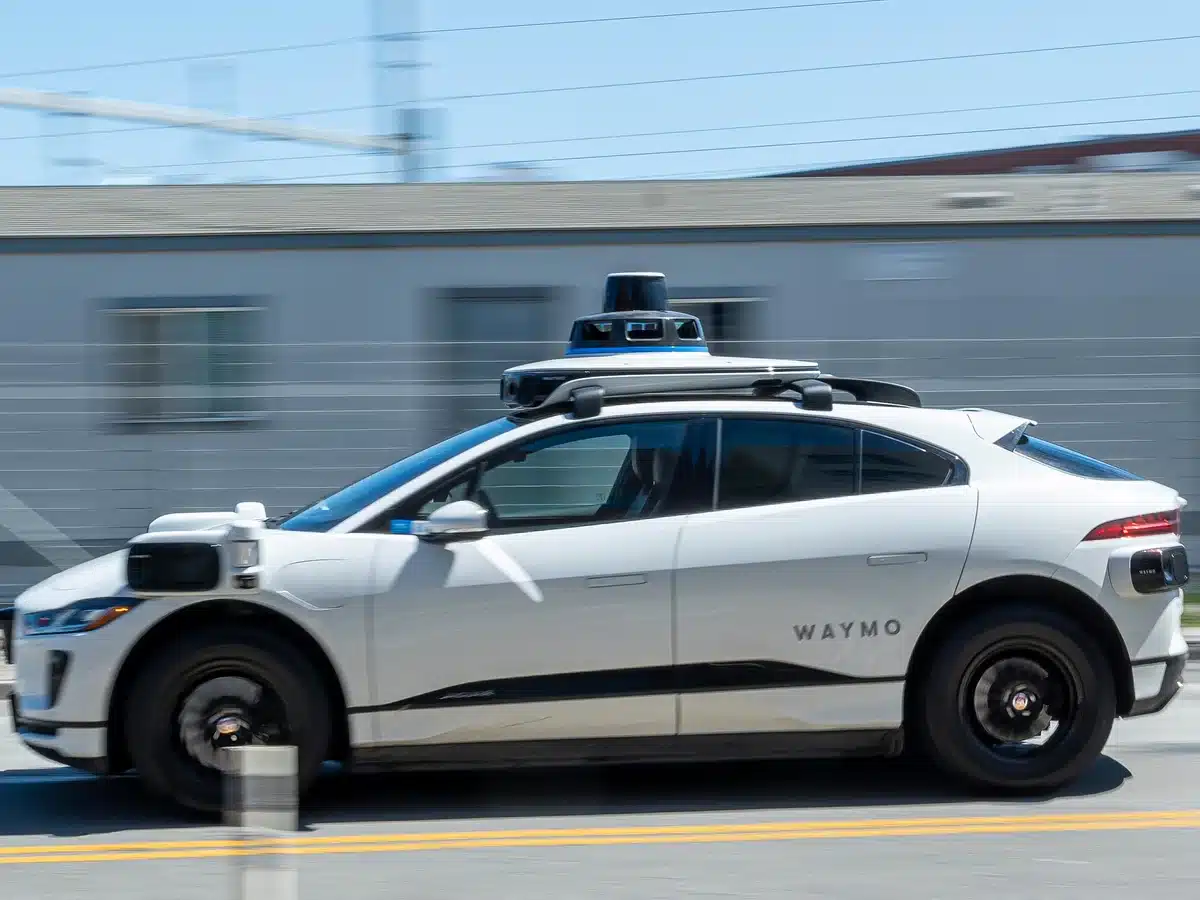London Enters the Age of Autonomous Mobility
The future of transport is arriving on the streets of London. Waymo, Alphabet’s autonomous vehicle division, has announced plans to launch its first driverless taxi service in Europe — with London as its debut city.
Trials with safety drivers will begin in 2025, and full commercial operations are expected by 2026, according to a report by The Guardian. This marks a milestone not only for Waymo but also for the European automotive and technology sectors, as one of the world’s most complex urban environments opens its roads to fully autonomous vehicles (AVs).
London’s narrow streets, unpredictable weather, and dense traffic create a challenging environment — making it a proving ground for the next generation of driverless technology.
Who Is Waymo?
Waymo began as Google’s self-driving car project in 2009 and has since evolved into a global leader in autonomous mobility. The company already operates robotaxi services in U.S. cities such as Phoenix, San Francisco, and Los Angeles, where passengers can hail driverless rides through the Waymo One app.
By bringing the service to London, Waymo will be Europe’s first major autonomous taxi operator, expanding its technology beyond North America for the first time.
The company’s vehicles, equipped with a suite of LIDAR sensors, cameras, radar systems, and onboard AI processors, can navigate city streets without human input — interpreting traffic lights, pedestrians, cyclists, and road signs in real time.
Why London?
Waymo’s decision to choose London as its first European testbed is both symbolic and strategic.
1. Complex Urban Environment
London’s streets present a unique challenge: narrow lanes, roundabouts, unpredictable weather, and a mix of old and new infrastructure. If Waymo can handle London, it can likely handle any European city.
2. Strong Tech and Regulatory Ecosystem
The UK is home to an expanding autonomous vehicle (AV) testing framework, with laws and safety standards being refined through the Centre for Connected and Autonomous Vehicles (CCAV) and the Department for Transport (DfT).
3. Public Transport Integration Potential
London’s sophisticated transport infrastructure — from buses and trains to cycling networks — allows AVs to integrate seamlessly into a multi-modal mobility ecosystem, supporting sustainability and traffic reduction goals.
4. Commercial Hub for Expansion
As a major European capital, success in London could unlock AV operations across the EU and beyond, establishing Waymo as a leader in urban mobility technology.
The Hardware Powering Waymo’s Autonomous Vehicles
Autonomous vehicles aren’t just about software and AI — their success depends on a highly advanced hardware ecosystem that blends sensing, computing, and safety engineering.
Waymo’s driverless cars are, in essence, supercomputers on wheels.
1. LIDAR (Light Detection and Ranging)
LIDAR systems are central to AV perception. Waymo uses rotating and solid-state LIDAR sensors that emit laser pulses to map the environment in 3D.
-
Detects objects up to 300 meters away.
-
Provides precise depth and shape data for pedestrians, cyclists, and vehicles.
-
Operates effectively in varying lighting conditions — essential for London’s foggy weather.
2. Radar Systems
Radar complements LIDAR by detecting objects in poor visibility, such as rain or snow — conditions common in the UK. Radar is also key to measuring velocity, helping predict movement in real time.
3. Cameras and Vision AI
Waymo’s vehicles use multiple high-resolution cameras positioned around the car to capture 360° imagery.
These feeds are processed by neural networks that interpret traffic lights, lane markings, and road signs — a crucial function for navigating London’s diverse road layouts.
4. Edge Compute Modules
At the heart of each Waymo vehicle lies a powerful onboard computer, capable of processing data from sensors, cameras, and radar systems simultaneously.
These edge-compute modules enable instant decision-making — crucial for avoiding accidents and reacting to unpredictable human behavior on city streets.
5. Thermal and Power Management
Driverless cars require immense computing power, which generates heat. Advanced thermal regulation systems, ruggedized enclosures, and energy-efficient processors ensure stable operation without overheating — especially during extended use in congested areas.
6. Sensor Fusion Architecture
Sensor fusion combines all inputs — from radar to LIDAR to camera vision — into a single, coherent model of the environment. This unified perception allows the vehicle to make human-like driving decisions with millisecond precision.
Integrating 5G and Edge AI into the AV Platform
The next generation of driverless vehicles relies on more than onboard hardware — it’s a networked ecosystem.
1. 5G and Low-Latency Connectivity
Waymo’s upcoming London rollout will likely leverage 5G networks to enable:
-
Ultra-low latency communication between vehicles and infrastructure.
-
Real-time updates on traffic conditions, hazards, and dynamic routing.
-
Vehicle-to-Vehicle (V2V) and Vehicle-to-Infrastructure (V2I) communication.
In the future, 6G technology may expand these capabilities, supporting distributed decision-making between cars and smart city systems.
2. Edge Computing
Instead of relying solely on cloud servers, Waymo uses edge computing to process critical data locally, ensuring instant reactions.
For London’s busy roads, this architecture minimizes latency, improving safety and responsiveness in unpredictable driving environments.
3. In-Vehicle AI and Machine Learning
Each vehicle continuously learns from driving data — not just locally, but across the global fleet.
AI models are updated regularly to improve performance, adapting to UK-specific road behaviors, such as:
-
Roundabouts (common in the UK but rare in U.S. cities).
-
Left-hand driving systems.
-
Pedestrian-heavy crosswalks and bicycle lanes.
This adaptive learning makes Waymo’s system more flexible and regionally aware over time.
Safety, Regulation, and the UK’s Role in AV Policy
Launching autonomous vehicles on UK roads requires rigorous compliance with European and British safety standards.
1. Functional Safety and Certification
Waymo’s systems will need to meet ISO 26262 functional safety standards — governing automotive electronic systems.
Additionally, hardware components like braking, steering, and compute units must meet ASIL-D (Automotive Safety Integrity Level) certification, the highest grade of safety for automotive electronics.
2. Driverless Legislation
The UK government has already passed the Automated Vehicles Bill (2024), allowing approved companies to operate self-driving cars on public roads.
The law introduces accountability frameworks defining:
-
Responsibility for accidents.
-
Data transparency requirements.
-
Cybersecurity standards for AV software and hardware.
3. Infrastructure Readiness
London’s city planners are upgrading digital and physical infrastructure to support AV deployment.
Expect smart traffic lights, connected road sensors, and designated AV zones to emerge as part of the rollout strategy.
Implications for Hardware Manufacturers and the Tech Industry
Waymo’s expansion into Europe isn’t just about mobility — it’s about pushing automotive hardware innovation to new limits.
1. Increased Demand for Automotive-Grade Components
Suppliers will need to deliver ruggedized sensors, cameras, and compute chips capable of withstanding long-term vibration, temperature, and moisture exposure.
2. Rise of System-on-Module (SoM) Designs
Autonomous vehicles increasingly depend on modular embedded systems that combine AI, networking, and control processing into compact form factors — reducing latency and simplifying maintenance.
3. Thermal, Power, and EMC Engineering
As vehicles add more sensors and processors, engineers must solve challenges around:
-
Power efficiency
-
Heat dissipation
-
Electromagnetic compatibility (EMC) in dense electronic environments
These engineering disciplines are becoming central to AV design.
4. European Manufacturing Opportunities
With stricter import/export regulations and security requirements, more AV hardware may be manufactured locally in Europe, creating opportunities for regional suppliers and startups specializing in AI chips, sensor modules, and safety electronics.
Broader Impact: Redefining Urban Mobility
The introduction of Waymo’s driverless taxis could transform how Londoners commute.
Benefits for Consumers and Cities
-
Reduced congestion through optimized traffic management.
-
Lower emissions from electric, AI-optimized driving patterns.
-
Increased accessibility for people with disabilities or without driving licenses.
-
Data-driven urban planning, with insights gathered from AV fleet analytics.
Challenges Ahead
-
Public acceptance and trust in driverless systems.
-
Legal frameworks for liability in case of accidents.
-
Integration with existing public transport systems.
Still, as Waymo’s trials expand, these challenges will be met with data, transparency, and collaboration between tech companies, regulators, and local authorities.
Conclusion: London Leads the Next Chapter of Autonomous Mobility
Waymo’s 2026 driverless taxi launch in London represents a defining moment for autonomous vehicles in Europe.
By combining AI intelligence, cutting-edge sensors, and next-generation connectivity, Waymo is setting a new benchmark for safety, innovation, and urban mobility.
For the UK, it’s more than a tech experiment — it’s an opportunity to establish itself as a global leader in smart transportation.
And for the hardware industry, it signals an era where software, silicon, and sensors converge — driving a transformation that’s not just autonomous, but intelligently human-centered.




